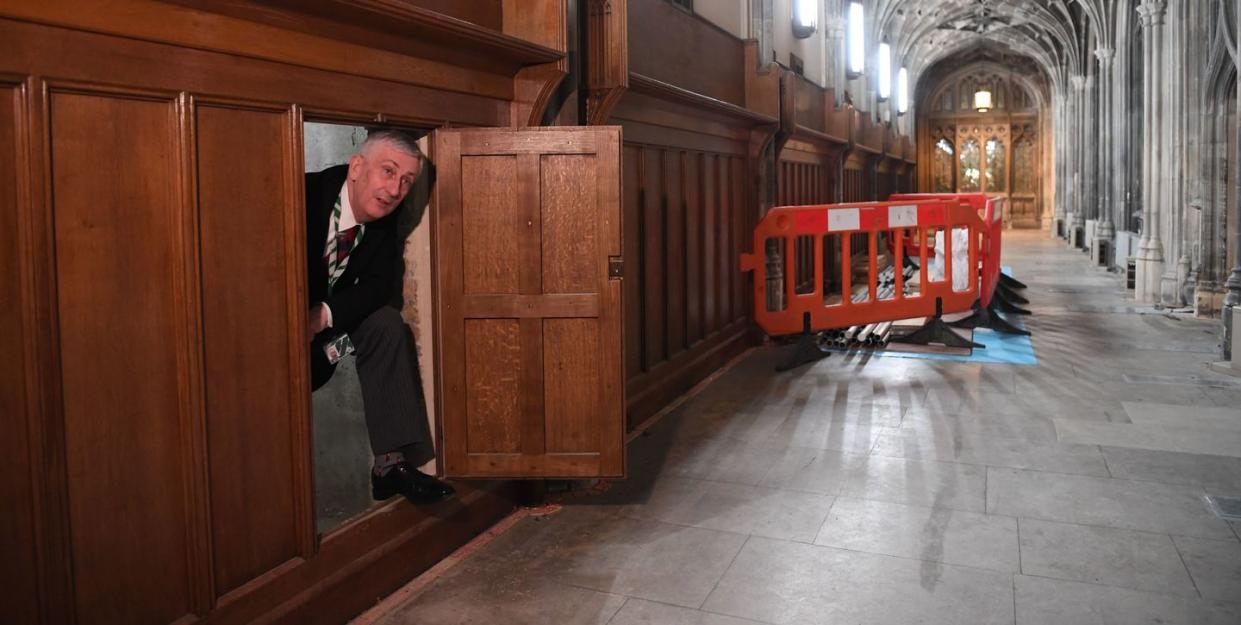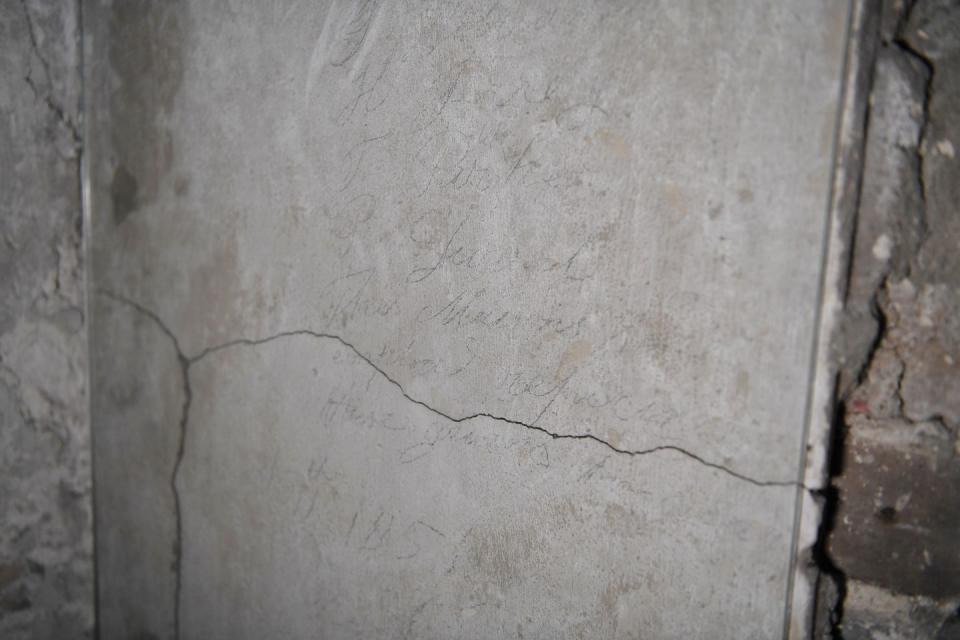An Ancient Secret Passageway Was Found Inside the British Parliament

Secret doors and hidden passageways are thought to exist purely in fairytales and spy movies, but perhaps it's time to reevaluate that theory.
During recent building renovations, a forgotten walkway was rediscovered in London's House of Commons. Hidden among wood paneling in Westminster Hall, the oldest part of the British Parliament, was a tiny, brass keyhole. British politicians would pass this marking each day, but no one thought to look closer, until a team of historians began working on the Hall's restoration.
"As we looked at the paneling closely, we realized there was a tiny brass key-hole that no-one had really noticed before, believing it might just be an electricity cupboard," said Liz Hallam Smith, the team’s historical consultant from the University of York, in a statement. "Once a key was made for it, the paneling opened up like a door into this secret entrance."
Indeed, the unnoticed panel revealed a passageway leading to the original House of Commons. The walkway, originally created in 1660, was constructed for Charles II's coronation banquet, and was then used regularly for about 150 years for other coronations and for regular use by politicians.
A post shared by UK Parliament (@ukparliament) on Feb 26, 2020 at 3:18am PST
This walkway, however, was already forgotten once before. As part of a mid-19th century renovation after a fire, the passage was blocked on both sides. The secret route went unused for nearly a century, until it was found and restored by other workers repairing the Hall after World War II.
It turns out that their restoration was too discrete, as the secret door became lost in the fray and historians thought the 1950s renovation blocked the passageway entirely. That is, until today.
"To say we were surprised is an understatement—we really thought it had been walled-up forever after the war," said Mark Collins, Parliament’s Estates Historian.
These repairmen over the centuries did not leave their work without making a statement. Inside the passage, Collins and his team found graffiti dating back to 1851.
One notable message was left by a man who helped block the passageway in the 19th century. It read, "This room was enclosed by Tom Porter who was very fond of Ould Ale."

"Tom Porter" and his fellow repairmen were not the only people historians know walked this route. They believe the passage was used by Robert Walpole, widely regarded as Britain's first Prime Minister. Also, according to The New York Times, Benjamin Franklin most likely used it while visiting the House of Commons.
"To think that this walkway has been used by so many important people over the centuries is incredible," said House of Commons Speaker, Sir Lindsay Hoyle, the first senior Member of Parliament to visit the passageway.
Given that the passage was already forgotten twice, Collins and his team hope to prevent the secret chamber from going untouched again. They will digitize the plans that originally led the team of historians to the doorway, so that this special find will not disappear in the future.
The historians are excited about what other discoveries this new restoration might bring. As Collins said, "The mystery of the secret doorway is one we have enjoyed discovering—but the palace no doubt still has many more secrets to give up."
You Might Also Like


